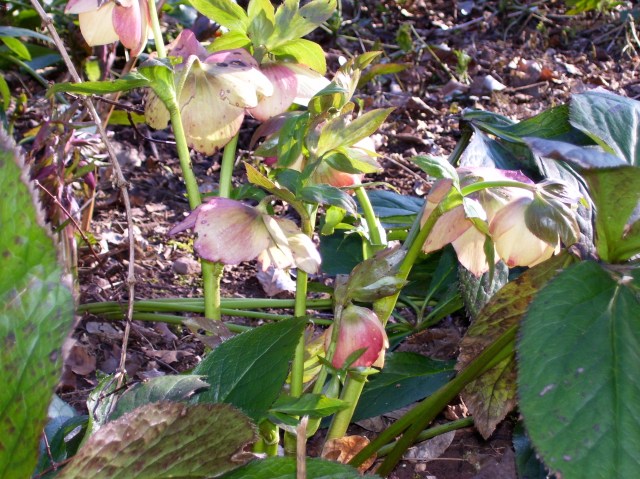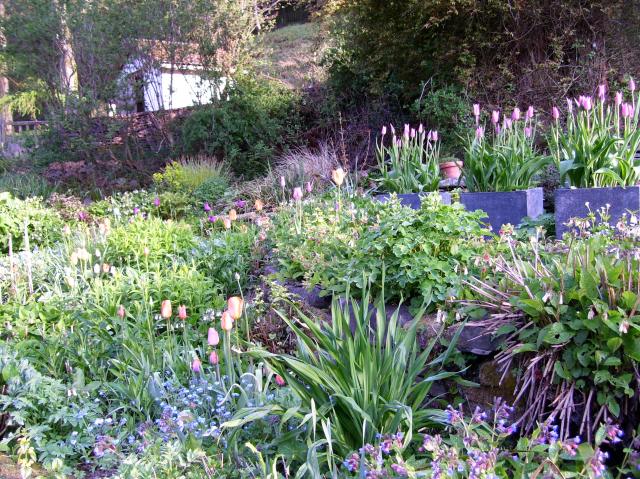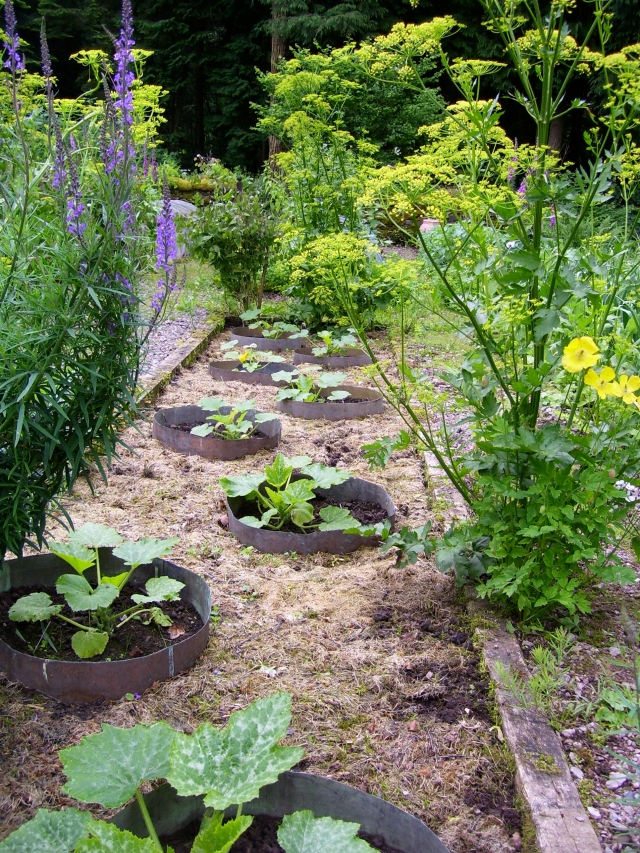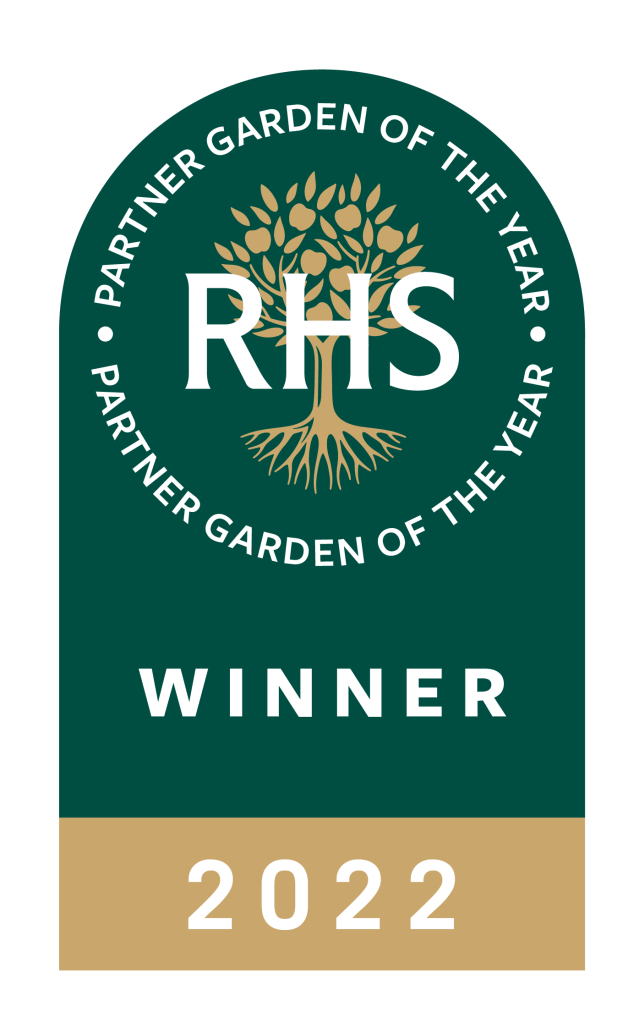The Garden Year
At the turn of the year there’s a tendency to look forward to the new gardening season and reflect on the past years – what’s worked, what didn’t and why, and so on. So I’ve spent a happy hour or so whilst it was too wet and windy for even me to venture out, going back through our past catalogue of photos, attempting to select ones which reflect what’s looking good in the garden at different times of the year.
The pictures range across the years, but are as relevant today as when they were taken. I’ll be adding new ones as time goes on, but these will give you a good idea of what to expect when you visit.
So starting with January here goes:
This is the time of year when the structure of the garden is all important – looking out of the office window in January at the moss-covered dry stone walls with ferns along the top, the tall straight clean stems of the huge conifers (we have brashed them up as high as we can go to let more light in and also enjoy their majesty), and the rope suspension bridge across the raging stream, leading to the natural swimming pond and the view down the valley.
We’re told that it’s a good idea – visually and for wildlife – to be not too enthusiastic cutting down vegetation in the autumn – but that’s ok until we get high winds which knock everything flat and/or break things off. At the moment I need to do a rescue job on a willow arch which I hadn’t got around to trimming – it’s been whipped into angles of about 45% rather than up-right. Some things we do leave though – like teasels – until they too are blown over and have to go.
One of the first real signs of Spring in our garden is the sight of the Hellebore flowers starting to appear in January and February amongst the detritus of last year . I must get out there are cut off the old leaves and remove fallen leaves and twigs so that I can enjoy the flowers without a guilt trip every time I walk through that part of the garden.
Hellebores are followed by snowdrops and crocuses naturalised under fruit trees and then daffs and narcissus, hyacinths and then tulips. Some were here when I arrived 36 years ago and I have added more each year. Daffs seem to be quite happy and get better each year, tulips I have always to replenish annually.
February is also the time of year with much activity in the wildlife pond and the natural swimming pond – it will be interesting this year to see if the toads return to the swimming pond – they seem to prefer the deeper water and attach their spawn – long strings of it – to the yellow flags at the edge of the pond.
March sees me well underway with starting off veg in the propagator and greenhouse for planting out later.
When we’re into April the spring bulbs really get going with putting on a show.
I like mixing flowers into the veg beds – Ian and I don’t agree on this one!
More tulips…
and more..
and more..
and yet more…
and yet more as we move into May…
I like tulips.
I always plant a selection of my favourite tulips from the earliest to the latest to enjoy a long season. Last year I experimented with some varieties that are supposed to be more perennial than others I grow – which need replenishing every year – and also naturalising some in grass. We shall see whether they escaped the attentions of the badger which we had visiting regularly last year.
June is when the veg garden starts to get going.
And the ferns on the stream bank are lovely at this time when they are a fresh bright green.
July is possibly my favourite time in this garden – so no surprise that this is when we will open for the National Garden Scheme in 2017.
And in August the show continues.
Into September when we, along with the butterflies, are enjoying the flowers and the fruits of our labours, whilst moving onto the next crops like over-wintering salad.
In October we are harvesting pumpkins and enjoying the autumn flowers.
November is continuing to harvest…
December might bring more snow to close the year…
So, what is the best time to visit our garden? Well it depends on what you like, but we think that there is usually something which is worth looking at and enjoying at any time of the year. But we would say that wouldn’t we?






































